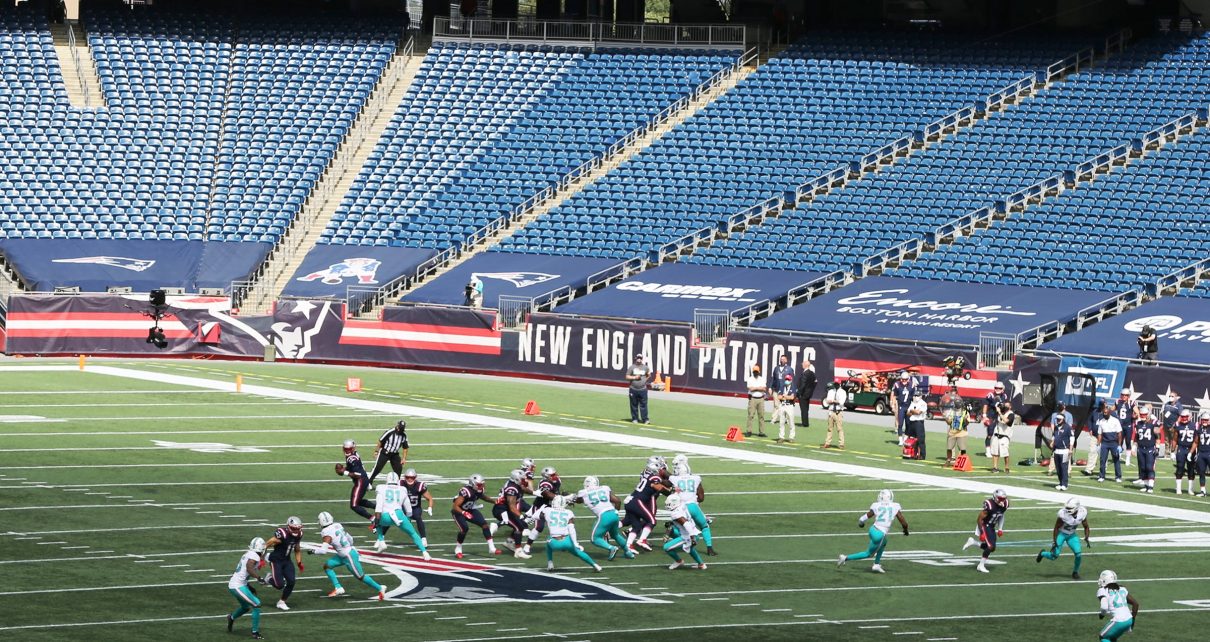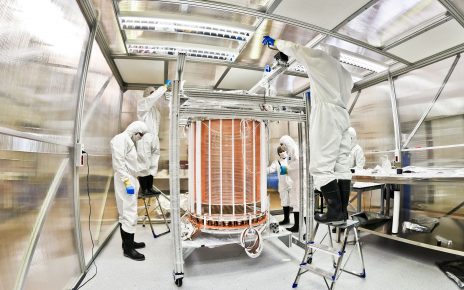It has been a roller-coaster year for sports, and we’re nowhere near done. In recent weeks, the advent of rapid testing for COVID-19 appears to have led several college conferences, the Big Ten and Pac-12 among them, to reverse earlier decisions and declare that they’ll play a fall football season after all. Pac-12 commissioner Larry Scott went so far as to call the conference’s agreement with Quidel to provide daily rapid-results testing “a game-changer” that will give student-athletes “the opportunity to pursue their dreams.”
We’ll be watching the coming weeks to see how that plays out—but the truth is, it’s probably not the biggest challenge facing the sports industry. No, the biggest challenge is this: How, and how soon, can conferences and leagues get fans back in the stands?
The abrupt restart of the college season has brought that question to the fore, as have plans by the National Football League (NFL) to play a full schedule. After eight months of watching on our screens and amid clear COVID-19 fatigue, the idea of a contest played in front of a packed house of electric-energy fans is beyond enticing. It’s the feeling of being part of something bigger, something communal, that appeals to so many sports fans.
But considering how many teams themselves are having trouble staying COVID-free, is the idea of fans in the stands even remotely worth considering? We’ll get to what we know about that (and what we don’t) in a moment. For now, staying true to sports, let’s look at the statistics.
In the NFL, money driven by in-stadium attendance is estimated to account for about 30 percent of league-wide revenue—somewhere in the area of $4 billion to $5 billion annually. So, as you might expect, the NFL is aggressively trying to figure out how soon it can fill the stands. It has left that decision to the individual teams. Of the league’s 32 franchises, 17 have plans to permit fans or are already doing so, but their approaches vary wildly, with the Dallas Cowboys permitting close to 25,000 fans per game, while the Pittsburgh Steelers and Philadelphia Eagles have been allowing about 5,500 in recent weeks. Following tumultuous recent weeks, with games being postponed and rescheduled, fan attendance will continue to be a hot topic.
In college football, the numbers change by the day. Already some 30 teams have plans to bring back 10,000 or more fans to their stadiums, and many more will do so in the thousands. Here, too, the financial incentive is powerful; college football teams generate revenue that can range from tens to hundreds of millions of dollars annually, and, in high-powered conferences like the SEC, Big Ten and Big-12, their success often is used to fund other athletic programs at their schools.
All of it matters. And none of it is possible unless having fans games can be deemed safe. So, is it?
“The idea of just opening a stadium and letting the crowds come back to capacity is clearly really foolish,” says Mark Rupp, chief of infectious disease at the University of Nebraska Medical Center. In an interview, Rupp tells me that while there could be ways of limiting crowds and enforcing safety measures, “I don’t think there is any way of taking the risk out of it completely, quite frankly.”
Athletes and staff themselves remain at risk, and that is with teams and programs doing everything they can to ensure safety. Multiple teams have had outbreaks, requiring 30-plus college games to be rescheduled or cancelled already. The Big Ten and Mountain West are scheduled to begin in late October, and the MAC and Pac-12 not until early November.
A COVID-19 outbreak roiled the Notre Dame football program, the Florida Gators had a surge of 21 positives on their team, Vanderbilt was forced to postpone a scheduled game due to a lack of available scholarship players, Baylor postponed an Oklahoma State game because of 42 cases amongst players and staff, and TCU postponed its opener against SMU. Both coach Nick Saban and athletic director Greg Byrne tested positive at Alabama this past week. According to ESPN, Saban is the sixth FBS coach to test positive.
At the University of California, Berkeley, defensive lineman Jamian Stephens died of complications from COVID-19 after returning for football practice, leaving his mother to tell the New York Times, “This is a billion-dollar industry—I get that. But not at the risk of these boys’ lives. Nothing is worth that.”
Back in February, at what has been dubbed “Game Zero,” nearly 2,500 Spanish soccer fans of the club Valencia CF traveled to Milan, Italy, to attend a Champions League match, joining a crowd of 40,000 in San Siro Stadium. No masking, distancing or screening protocols were in place at the time. The result was described as a “biological bomb”—a superspreading event that led to infection both locally and in Spain. According to a Wall Street Journal report, “The military drove the dead away by the truckload” from hospitals in Bergamo, Italy.
With more than 1.1 million deaths around the world having resulted from coronavirus, and U.S. cases escalating, the question remains important: Should we be opening our stadiums to fans, where people tend to come from different places, congregate closely for several hours and then disseminate to various locations? Florida football coach Dan Mullen went so far as to ask Gators to “pack The Swamp” with 90,000 fans for the LSU game, a remark that drew a bemused response from his own athletic director. In the end, it didn’t matter; the contest was postponed after an outbreak of positive tests within Mullen’s program, including the head coach himself.
“Current recommendations worldwide are not to have large crowds mingle,” says Monica Gandhi, an infectious disease expert at the University of California, San Francisco. In an e-mail exchange, Gandhi tells me she could envision fans returning to stadiums under strict safety protocols (masking, distancing, employing good hand hygiene) and at perhaps 10 percent to 20 percent of capacity. “COVID-19 is not radioactive,” Gandhi said, “and there are ways to keep fans and the college community safe.”
The Centers for Disease Control (CDC) does not answer the question about in-person sporting events definitively, recommending that in deciding whether to attend a sporting event, an individual should consider the prevalence of COVID-19 in the community and one’s ability to safely distance six feet apart. But there is a relevant study to consider, albeit a narrowly focused one.
Published recently as a preprint (meaning it has not been peer reviewed), the study examines the threat that fans attending college sporting events pose to the health of the local community, and it does so from a very specific angle: the impact of an influx of visitors from areas outside the community. That’s right on the money for many college towns, whose teams may draw fans from all over the state or throughout a region. These fans flock to the town in a single one- or two-day period, go to restaurants, bars and shops, take part in tailgates, and attend the game itself.
The study’s authors thus model multiple hypothetical scenarios, varying the number of infectious visitors, the extent of visitor-student interaction and the extent that the university might or might not have the coronavirus under control. The lead author, Eric Lofgren, an assistant professor at Washington State University, summarizes the conclusions: “We found in-person sporting events definitely increase the rate of COVID-19 transmission, and this occurs importantly even when things seem like they would be okay.”
The increase in the number of cases in the study’s model ranged from 25 percent to 822 percent, notes Lofgren, depending upon factors such as whether the campus had controlled a coronavirus outbreak, whether the visitors had a high prevalence of infection, and how extensively they all intermingled. But the findings all point in the same direction. The study’s conclusion: Schools should “seriously consider the cancellation of in-person sporting events on college campuses for the duration of the pandemic, or at least until a widespread and effective vaccine is available.” Adds Lofgren, “The little weird cardboard standies may possibly be your stadiums’ population for some time.”
That sounds grim, if unsurprising, given our dismal experience with COVID-19 and mass gatherings so far. But it may not be the end of the conversation. What happens, for example, if attendance is drastically reduced in those stadiums? What happens if fans wear masks and are socially distanced in, say, four-person pods? What if high touch surfaces are cleaned often? Most significantly, what happens if everyone undergoes rapid testing on game day before they walk in the gate?
When the Pac-12’s Scott lauded rapid testing, his context was the conference’s athletes, but widespread availability of such testing could be the thing that gets fans back into the stands. Gandhi says that only allowing into the stadium those with negative tests “would certainly be very safe,” but the tests themselves would need to be very accurate, and it’s not clear that rapid antigen tests are there yet, with a range of sensitivities reported.
Michael McEntee is the chief science officer at eTrueNorth, a company that supports drive-through testing sites on a large scale for the Department of Health and Human Services. McEntee, who has worked in point-of-care testing for 40 years, tells me that new technologies, including rapid turnarounds like one that involves a tongue scrape, are arriving quickly. At Columbia University, for example, Zev Williams has developed a rapid saliva test where, via an enzymatic reaction, a test-tube solution turns from red to yellow with a positive COVID-19 result. In a preliminary study, the authors found the test was 97 percent sensitive. Larger-scale studies are needed, of course, but such rapid testing could reshape our conversation about having fans at games.
Players, coaches and staff must be made safe before that conversation is relevant, of course, and many have their eye on that ball. Still, imagine this: You walk up to a stadium, but now you present two tickets. One shows that you have a seat inside; the other declares you’ve tested negative for the virus today. For fans, that’s the game-changer—and it could be a reality sooner rather than later.



